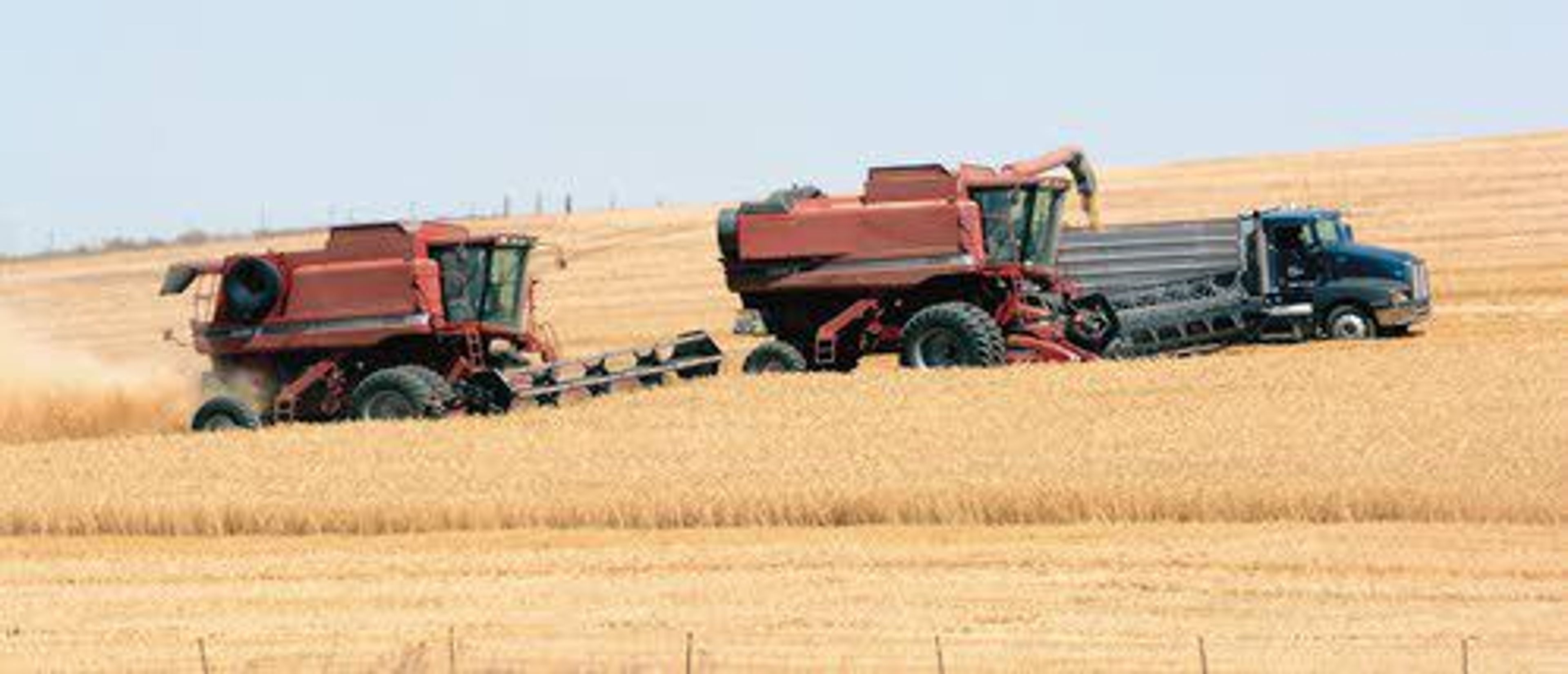Weather fluke weakens wheat's worth
Area farmers feeling the strain of "falling numbers" in wheat kernels
GREENCREEK - As Charles Dickens might have said, this year's wheat harvest is the best of times and the worst of times.
While farmers from Whitman County to Idaho County are reaping some of the biggest and highest quality yields they've had in years, a weather fluke in June that hit the crops with record-low temperatures just as the wheat kernels were developing has caused a problem called "falling numbers." Falling numbers refers to the degradation of starch in wheat kernels, which makes the soft white and club wheat that is grown in the region and sold at premium prices to Japan and other high-end buyers unfit for baking flour. Farmers are likely facing up to 70 percent crop losses that will not be covered by any government emergency programs or private insurance.
"It's a disaster for everybody," Randy Olstead, general manager for Columbia Grain in Lewiston, told a group of about 150 farmers gathered Tuesday morning at the Greencreek Community Center.
Blaine Jacobson, executive director of the Idaho Wheat Commission, said this is likely "the most significant crop disaster" that many farmers in the area have ever seen.
According to the wheat commission, wide temperature variations in Nez Perce, Lewis, Latah and Idaho counties between June 12-19 appears to have hurt the wheat as the kernels were filling. Although there were no untimely rains at that time, the fluctuation triggered sprouting in the wheat, which changes the starch needed for milling purposes into sugar and drops the quality of the wheat to feed grade.
Farmers were already expecting prices below $4.90 a bushel because of a worldwide high-yield harvest this year. Cost of transportation to the export markets in Portland, Ore., coupled with a dockage because of the falling numbers, means some farmers may be selling their wheat at $2.50 a bushel or less - at least a dollar below their break-even price.
"You're talking about guys' livelihoods here," said Jonathan Rosenau, a Winona-area farmer who helped organize Tuesday's meeting. "It's scary for a lot of guys. After two years in a row of extreme drought last year that we haven't seen since the '70s and then now this, there's a very high chance that if we don't have something come in that we could see a lot of farmers say goodbye."
But many farmers in the audience expressed skepticism about the validity of the falling numbers tests. Several of them said they have tested wheat grown in fields side by side under identical conditions and the falling numbers were low in one place and above the threshold in the other.
Others said some farmers have had low falling numbers in their wheat at harvest but those numbers went back up after being stored in the bins for a while.
Jacobson acknowledged such reports, but said, "We don't know of any science yet that supports that."
Others questioned how export buyers would react to wheat with low starch content.
Steve Wirsching, vice president of U.S. Wheat Associates, which markets U.S.-grown wheat to foreign companies, said Japan, one of the area's top buyers of local wheat, is "almost fanatic" in its specifications for high-quality flour.
"It really does damage the end product," Wirsching said. "That's why customers pay premium price for our wheat."
He and others also warned that the wheat market is highly competitive and wheat-buying countries will quickly go elsewhere if they cannot attain the product they're looking for in the U.S.
Once that market share is lost, officials said, it could take years to gain it back.
Jacobson and Wirsching said their organizations are trying to find buyers that don't require the exact standards as the usual Asian customers. Flatbread markets in the Middle East are some possibilities. Wheat with low falling numbers must be segregated from other wheat and research is being done to determine whether low falling numbers wheat can be successfully blended with higher quality wheat.
"The problem is you don't know anything until it's harvested and tested," Rosenau said. "So at that point, what do you do? A lot of guys have joked and said: 'I wish it was a drought again. Because at least there was some financial assistance.' There's nothing here for $2.50 wheat."
---
Hedberg may be contacted at kathyhedberg@gmail.com (208) 983-2326.









